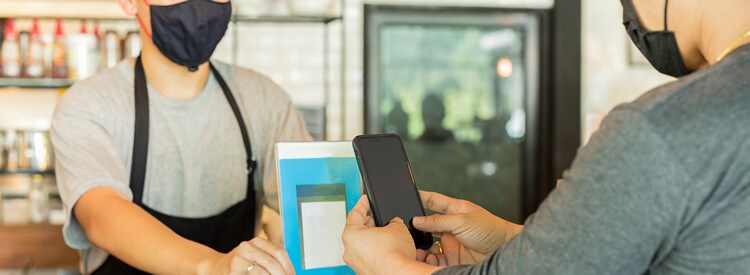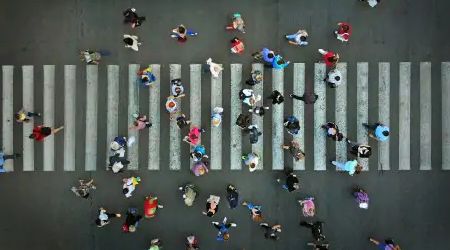Article
Survey Says: COVID-19 Sparks Changes in Consumer Behaviors
Kim Melvin, senior director, Global Retail Marketing at Sensormatic Solutions, shares her insights on key trends and findings from the latest consumer shopping behavior survey.

The 2020 retail landscape is looking drastically different due to COVID-19. Stay-at-home orders, social distancing guidelines, brick-and-mortar store closings and product shortages have prompted consumers’ behaviors and shopping habits to change. These changes fuel the need for retailers to explore how they can best meet customers’ desires in the short-term, while restoring consumer confidence for the long-term as more stores begin to reopen.
To better understand consumer sentiment and their shopping habits during this time, Sensormatic Solutions surveyed over 1,000 U.S. consumers, 18-years and older, between April 24-25, 2020.
Shoppers are taking extra precautions when shopping in-store
Our survey found 59% of respondents are moderately or very concerned about shopping in-store. As expected, extra precautions are being taken by most consumers heading to the store. Sixty-one of respondents said they are trying to shop during less busy hours and 49% of respondents are using self-checkout as a precaution when shopping in-store.
Currently, the most important factors to customers when shopping in-store are cleanliness (37%) and product availability (34%). When asked what actions would make them feel the most comfortable with returning to stores, 32% of respondents stated when retailers are better at controlling the number of people in stores to promote social distancing would be the most important, followed by 25% who said adding more fulfillment options (buy online pick-up in stores, curbside pickup).
With this in mind, retailers should consider implementing real-time occupancy and social distancing solutions to better understand shopper density within their stores for compliance with social distancing guidelines. These solutions can also help optimize cleaning schedules for common facilities or high-touch areas, such as bathrooms and self-checkouts, based on real-time traffic patterns.
Consumers are spending less and making fewer visits to physical stores
With non-essential businesses closed, shoppers are generally making less visits to physical stores in the past month. Thirty-eight percent of respondents shop in-person once per week, followed by 28% shopping a few times per week and 21% shopping once every two weeks.
The majority (92%) of respondents shopping in-store in the last month have shopped for grocery, followed by pharmacy (47%) and health & beauty (30%). Twenty-four percent of respondents have shopped in-store for home improvement/gardening in the last month and only 12% of respondents have shopped in-store for apparel in the last month. This is likely to change as more parts of the country have better spring weather, prompting more home improvement and gardening projects, and more apparel stores reopen after quarantine restrictions are lifted.
As far as spending, a little more than half of respondents (54%) indicated that they are spending less than usual due to the COVID-19 crisis. Notably, only 17% of respondents said price is the most important for when shopping in-store currently, a drastic shift from pre-quarantine consumer sentiments.
Embracing BOPIS and curbside pickup
With many stores closed and concerns over going inside essential businesses that are still prevalent, it’s no surprise that shopping online and shipping to direct to their home is the most popular fulfillment option, with 61% of respondents using it in the last month. However, consumers are turning to additional fulfilment services when venturing out of their houses, with respondents using the following options in the last month: self-checkout (58%), curbside (35%) and buy online pickup in-store (32%).
The majority (74%) of those who used buy online pickup in-store in the last month found that their orders were fulfilled in a timely manner. Similarly, for respondents who used buy online curbside pickup, 72% stated that their order was fulfilled in a timely manner.
Of course, there are still challenges with inventory visibility, with 17% saying they arrived to find a product was unavailable and substituted by something else when using buy online curbside pickup. Retailers should take advantage of inventory intelligence solutions to have a clear view of their inventory across the enterprise – table stakes in today’s reality.
Bringing consumers back into stores
Creating a store environment where consumers feel safe will be crucial for drawing people back into the store. In addition to implementing social distancing measures, retailers should also consider offering special sales and discounts and make sure their shelves are properly stocked to ensure success.
According to our survey, discounts and sales (45%) will be the main driver for enticing consumers into in-store for non-essential products (e.g. clothing, electronics, etc.). Twenty-four percent of consumers claim they will be most enticed to shop in-store for non-essentials products by product availability, further signally the need for inventory visibility.
Stay tuned as Sensormatic Solutions plans to continue surveying consumers to provide insights on consumer behavior and sentiment amid the ongoing coronavirus crisis.
Contact us for more information on how Sensormatic Solutions can help you with your COVID-19 retail security needs.
Explore Related Topics

Ready to see how Sensormatic Solutions can transform your bottom line?
Contact Us

